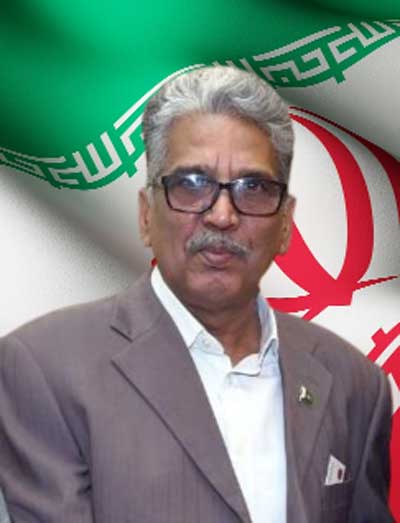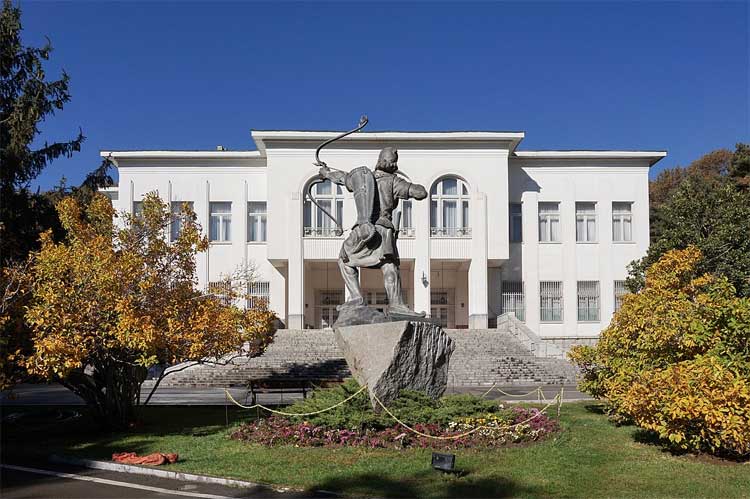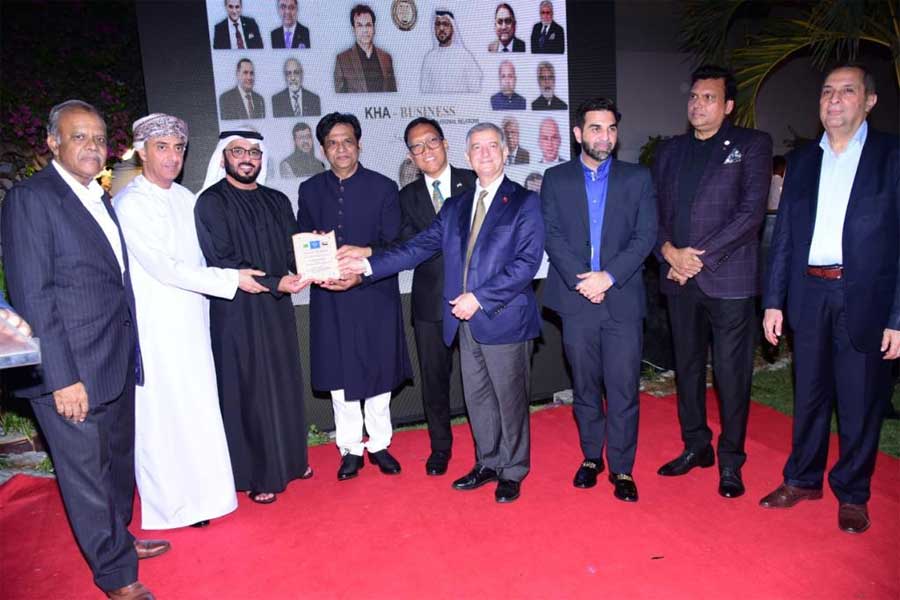

On Tuesday, July 11, 2023, during our third-day visit, we began by exploring the quaint Residence of Imam Khomeini, which occupies a modest 60-meter space. Following this, we ventured to our next destination, The Saadabad Palace, situated in Tehran, Iran. Spanning several kilometers, this palace serves as an enduring testament to the opulence, architectural grandeur, and extravagant lifestyle of the former Shah of Iran, Raza Shah Pehlvi. Our official guide, Ali Fatimi, efficiently purchased our entry tickets to the palace.
This magnificent complex served as the summer residence of the monarch and boasts lush gardens and numerous palatial buildings, offering visitors an immersive experience into Iran’s royal history. The Saadabad Palace complex in Tehran, Iran, covers a vast area of approximately 110 hectares (about 272 acres). It includes numerous buildings, museums, and beautiful gardens. The complex served as the royal residence for the Pahlavi dynasty and is now a museum open to the public.
Historical Significance
The Saadabad Palace holds immense historical significance in Iran. It was originally built during the Qajar Dynasty in the 19th century but underwent significant renovations and expansions during the Pahlavi Dynasty in the 20th century. Reza Shah Pahlavi, the founder of the dynasty, initiated the modernization of the palace, and his son, Mohammad Reza Shah Pahlavi, continued the efforts to transform it into a grand royal residence.
Architectural Marvel
One of the most captivating aspects of the Saadabad Palace is its architectural brilliance. The complex comprises numerous buildings, each with its unique style and purpose. The architecture seamlessly blends Persian, European, and other international design elements, creating a visually stunning ensemble. Visitors are often awed by the intricate details, ornate facades, and beautifully landscaped gardens that make up this sprawling palace.
Lush Gardens
The palace is not just a collection of opulent buildings; it is also surrounded by extensive gardens that add to its charm. These lush green spaces are meticulously maintained and provide a serene and picturesque backdrop to the palace structures. Visitors can stroll through the well-manicured gardens, enjoying the vibrant flowers, fragrant trees, and soothing fountains that adorn the landscape.
Palatial Buildings
The Saadabad Palace comprises a multitude of buildings, each with its distinct character. Some of the notable ones include the Green Palace, White Palace, and Black Palace. The Green Palace, also known as the Shahvand House, is particularly famous for its exquisite mirrorwork and lavish decorations. The White Palace, on the other hand, boasts a European neoclassical design and served as the official residence of the royal family. The Black Palace, constructed during the reign of Mohammad Reza Shah Pahlavi, is a stark contrast with its modernist design and minimalist aesthetics.
Artistic Treasures
One of the highlights of visiting the Saadabad Palace is the opportunity to view an impressive collection of artifacts. The palace houses a rich assortment of historical and artistic treasures, including paintings, carpets, sculptures, and rare furnishings. These items provide valuable insights into the cultural and artistic heritage of Iran and the tastes of its former rulers.
Immersive Experience
Exploring the Saadabad Palace is not merely a visual experience; it is a journey through time. Visitors can step into the shoes of Iran’s royalty and imagine the grandeur of court life during the Pahlavi era. The opulent furnishings, luxurious bedrooms, and lavish dining areas all evoke a sense of the extravagant lifestyle enjoyed by the Shah and his family.
Political History
Mohammad Reza Shah Pahlavi, the son of Reza Shah, continued to use Saadabad Palace as a residence and as a center for political activities. The palace complex was also utilized for hosting foreign dignitaries and conducting diplomatic affairs. The Shah held various state receptions and meetings with foreign leaders there.
The Iranian Revolution of 1979 led to the overthrow of Mohammad Reza Shah and the establishment of the Islamic Republic of Iran. After the revolution, Saadabad Palace was no longer used by the royal family. In the post-revolutionary era, Saadabad Palace was repurposed as a museum complex. Many of the palaces and buildings within the complex were opened to the public, showcasing Persian art, culture, and history.

While the palace complex ceased to be a center of political power, it continued to play a role in diplomacy. Some of the buildings within Saadabad Palace were used for hosting diplomatic meetings and negotiations. The palace has hosted important diplomatic gatherings and negotiations, including talks related to regional conflicts and international relations.
Saadabad Palace has a rich history in Iranian politics, transitioning from a royal residence to a governmental and diplomatic center during the Pahlavi era. It continued to serve as a venue for diplomatic functions in the post-revolutionary period and now stands as an important cultural and historical landmark in Iran.
Saadabad as a Cultural Destination
In addition to its historical and architectural significance, the Saadabad Palace has evolved into a cultural destination. It frequently hosts exhibitions, cultural events, and educational programs that aim to promote Iranian art, history, and heritage.
 This transformation has turned the palace into a vibrant hub of cultural activities, attracting both domestic and international tourists.
This transformation has turned the palace into a vibrant hub of cultural activities, attracting both domestic and international tourists.
Visiting Practicalities
The Saadabad Palace in Tehran, Iran, stands as a testament to the country’s rich history, architectural prowess, and the opulent lifestyle of its former monarchy. This sprawling complex, with its lush gardens and palatial buildings, offers visitors a unique opportunity to immerse themselves in Iran’s royal heritage. The palace’s historical significance, architectural marvels, and artistic treasures make it a must-visit destination for anyone interested in exploring the cultural tapestry of Iran. Beyond its historical significance, the Saadabad Palace has transformed into a cultural hub, hosting events that celebrate the nation’s art, history, and heritage. A visit to this majestic palace is not just a sightseeing trip; it’s a journey through time and a glimpse into Iran’s royal past.
When planning a visit to the Saadabad Palace, it’s essential to keep in mind a few practical considerations. The palace is typically open to the public, but it’s advisable to check the opening hours and admission fees in advance. Guided tours are often available and provide valuable insights into the history and significance of the palace. Visitors should also dress modestly and respectfully, as the palace is a historical and cultural site.
Roza Imam Saleh (RA) son of Imam Musa Kazim (AS).
After our captivating visit to the magnificent Saadabad Palace, our journey led us to the equally sacred and spiritually significant Roza Imam Saleh. This revered shrine, located in close proximity to the Saadabad Palace in Tehran, is a testament to the deep-rooted religious heritage of Iran and the Shia Muslim community.
Roza Imam Saleh is dedicated to Imam Saleh, a revered figure in Shia Islam. He is not only known as the son of Imam Musa Kazim but is also a respected brother of Imam Raza (AS). For Shia Muslims, this shrine holds immense religious significance, and it stands as a place of pilgrimage, reflection, and spiritual connection.
The architecture of Roza Imam Saleh is a marvel in itself. It showcases intricate designs, awe-inspiring craftsmanship, and beautiful calligraphy that adorn its walls and surroundings. These artistic elements create a serene and spiritually charged atmosphere, making it an ideal place for visitors to immerse themselves in moments of prayer, meditation, and spiritual contemplation.
Visitors to Roza Imam Saleh have the opportunity to pay their respects to Imam Saleh, offer prayers, and connect with the profound spiritual lineage that is at the heart of the Shia faith. It is a place where believers and curious travelers alike can gain a deeper understanding of the rich religious traditions and cultural heritage that define Iran.
In addition to its religious significance, Roza Imam Saleh serves as a symbol of the unwavering devotion of the Iranian people to their faith and the preservation of their cultural heritage. It stands as a testament to the enduring importance of religious sites in shaping the identity of a nation, and it continues to draw pilgrims and visitors from all corners of the world who seek to experience the profound spirituality that permeates this sacred place.
Here is the translation of the in English of the masterpiece Urdu write-up of Mr Nazir Leghari about the Palace.
Now our car from a very small house with two narrow rooms in the tight alleys of Ayatollah Khomeini to Tehran, or rather in front of the grand houses of Saadabad Palace in Iran. I have seen many royal palaces. Forty years ago, I visited Sadegh Garh Palace in Dera Nawab Sahib District Bahawalpur with my dear friend and brother Anjam Lashari, where I also met the Amir of Bahawalpur.
I went to the Kingdom of Saudi Arabia 32 years ago and saw the Imam’s Palace in Riyadh and had a meeting with King Fahd bin Abdulaziz. During those days, I not only had a meeting but also had a meal with him at the Crown Prince’s (later King) Abdullah bin Abdulaziz’s residence in Riyadh. During the same days, I participated in dinner invitations from Saudi princes Prince Sultan bin Abdulaziz and Prince Naif bin Abdulaziz.
Twenty-four years ago, I saw the door of traitors, royal residences, royal weapons, the royal throne, and a city of horizons, Koh-i-Noor, in the Royal Palace of Tower Hill in London. During those days, I saw Queen Elizabeth outside Buckingham Palace.
Twenty years ago, I toured around the Royal Palace in Brussels, the capital of Belgium, in a car. During the same days, I saw the Winter Palace, which was used by the Kings of France, in Paris.
I have also seen the official residences of rulers in Dubai, Pakistan, Afghanistan, Sri Lanka, and some other countries. But I was scared at that time, just like when 37 years ago in Lahore, former Chief Minister of Punjab Mian Mumtaz Daulatana said that they would come to the doors of my house near the Shimala Hills and bring a car from there to inside the house. Now, there is a residential society in that house.”
From Saadabad Palace, we are reminded of Allama Iqbal’s famous poem that captivates the romance of the Russian Revolution, “Utho Meri Dunya Ke Ghareebon Ko Jaga Do, Kaakhe Amaara Ke Dar-o-Diwaar Hila Do.”
I and Manzar Naqvi are waiting for Ali Fatimi, who will escort us inside the Saadabad Palace complex, right outside the central gate. Saadabad Palace is not just a palace; it is a complex with several palaces. The White House, the residence of the American president, is built on 18 acres of land. The Imperial Palace of Japan in Tokyo covers 280 acres. Buckingham Palace in the UK is spread over 77,000 square meters and has 775 rooms. The royal palace in France, the Palace of Versailles, spans 88 acres. The Indian Presidential Estate covers an area of 19,000 square meters. The Islamabad Presidential Palace occupies 471 acres. Now, we come to the Saadabad Palace Complex. This complex, built in a neoclassical style, sprawls across 272 acres. Upon entering, one gets the feeling of being in a dense jungle or sometimes, it resembles the hills of Swat or Kaghan Valley. It feels as if I am traveling from Kandy in Sri Lanka towards Nuwara Eliya.
Saadabad Palace Complex is said to have several palaces within it. The Arms House palace contains all kinds of weapons. It is not just an arsenal but an armory with various modern weapons. I didn’t see this armory, but it is said to house a wide range of modern weaponry, including pistols, revolvers, machine guns, submachine guns, rifles, shotguns, and even Kalashnikovs. However, when the people rose, all these weapons, in this armory and everywhere else, were left untouched. These weapons are now lying as they were left. Not a single weapon was used when the people revolted. In addition to this place, there are royal clothing, regalia, and imperial costumes for the queen, king, king’s parents, and children, all displayed as if they were to be worn again, but they will never be worn again. Here, you can find the clothes of Farah Diba, Princess Ashraf, and other princesses. Apart from these, there are the clothes of Shah’s first wife, Queen Farah, Shah’s elder son and former Crown Prince Reza, his sister Princess Farahnaz, and the step-sister Shahnaaz, displayed in the Palace of Costumes. The clothes of the Shah’s family are preserved here, as well as those of his children, in such a way that it seems they will be worn again, but they will never be worn again.
In another section of the Shah’s complex, Iran’s finest paintings are on display. These paintings are featured in a beautifully published book. It appears as if these paintings have come out of the book and adorned the walls of the palace. These paintings encompass various mediums. Iran is the center of fine arts. Just as Persian poetry has unparalleled poets like Ferdowsi, Hafez, Saadi, Rumi, and Omar Khayyam, Iranian photography has its own recognition with artists like Raza Abbasi from the 16th century, Kamal al-Mulk from the 19th century, Manir Shahruddi from the past century, Hussein Zandirudi from the past century, Shirin Nashat, and other photographers and calligraphers, who are considered the pride of Iran in the world of art and photography.
Palace is followed by an amazing house of artifacts and geometrical instruments. Here, the splendors of mirrors and the elegance of Urdu and Persian poetry are showcased just like the splendors of jewels. Then, the walls of Phirbamaus Palace and Green Palace come into view. We are told that within the complex of palaces, there is a separate palace for royal carriages and valuable cars. In this palace, there are rows of motorcycles from Japanese Yamaha and German Benz, Mercedes, Rolls-Royce, Chevrolet, and BMW. These were likely last used in 1979, perhaps even earlier. But the glitter and glamour of their polished appearance make it seem like they were just brought here from some royal showroom.
Ali Fatmi, our guide in Saadabad Palace, takes our tickets at the entrance and leads us inside the boundaries of the palace through the central gateway. Mohammad Bhai is also accompanying us. We are progressing towards Royal Armory, Costume Palace, Paintings Palace, Utensils Palace, and the Palace of portraits of the Royal Family, and the Palace of Royal Cars’ Pool. Amidst the lush green trees and shrubs, a wide road is meandering through the complex, and we are walking on this road. Birds in the jungle are chirping in their respective languages, flying here and there. Leaving behind the pathways that guide us to different palaces, we are heading towards a specific palace to the right. These are the wonders of the Qajar and Pahlavi royal families, with 18 palaces created for a connoisseur’s delight.
From afar, we spot a white building. It is Mellat Palace, also known as White Palace. We met His Highness Miangul Gul Jahanzeb in our hometown Mingora in Swat 45 years ago. We wanted to see Melat Palace, which is owned by His Highness Miangul Amirzib and his wife Jamila, daughter of Field Marshal Ayub Khan. We were granted permission to visit that palace. Years later, I visited Mellat Palace in Marghazar with my wife and children. I, a modest student of the knowledge of financial disputes in the feudal society, cannot compare or compete with the grandeur and beauty of such large palaces. Instead, I want to see the world’s palaces transform into marvel houses after a great revolutionary act.





